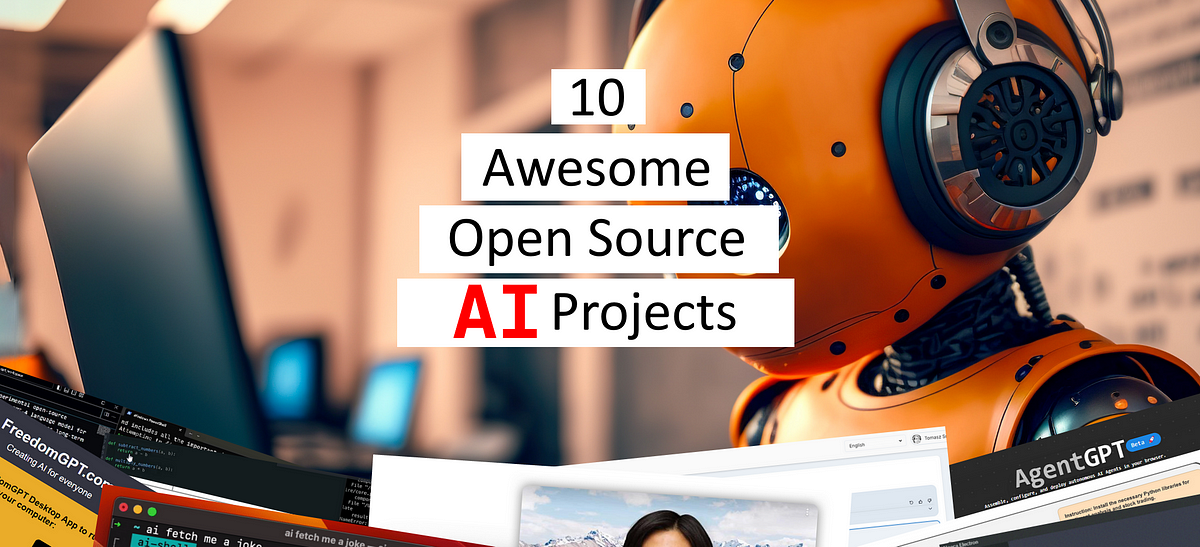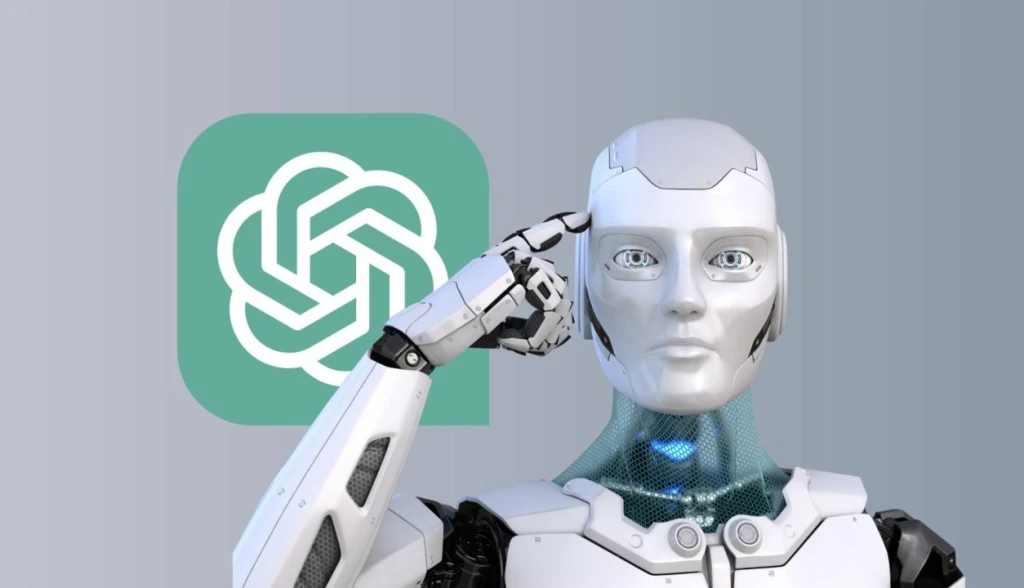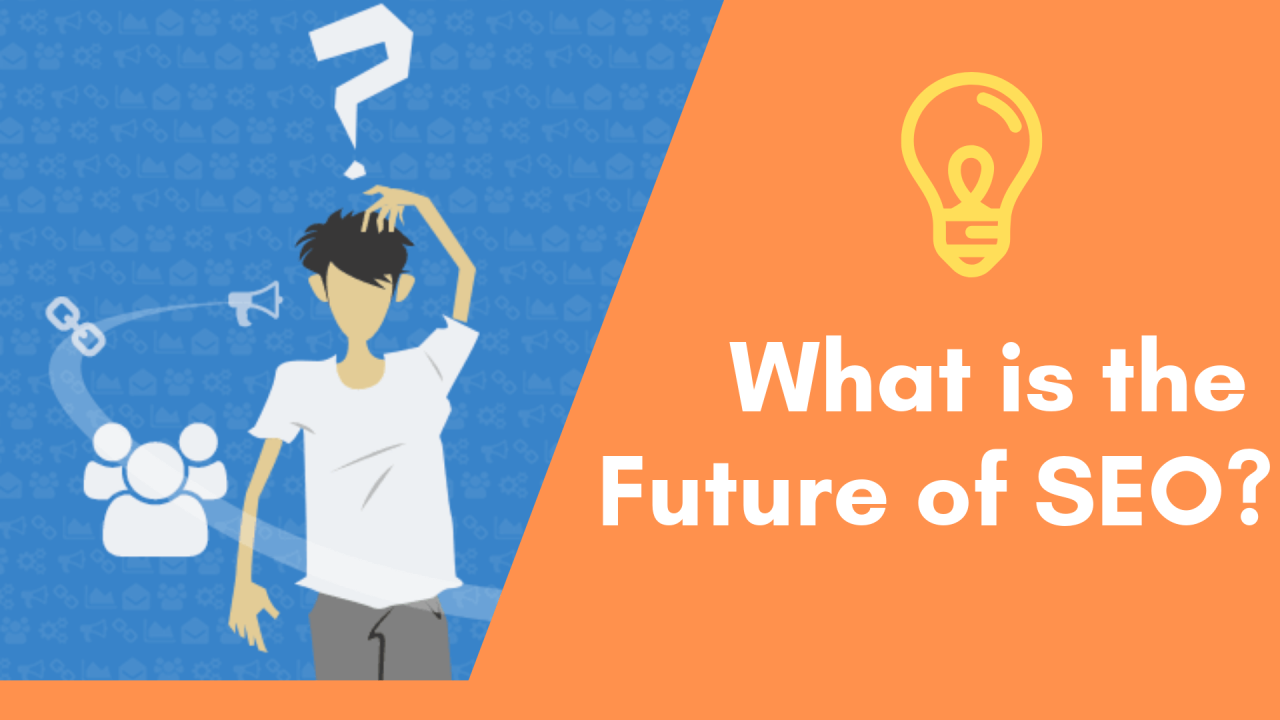Išbandykite DI savo svetainėje per 60 sekundžių
Stebėkite, kaip mūsų DI akimirksniu analizuoja jūsų svetainę ir sukuria personalizuotą pokalbių robotą - be registracijos. Tiesiog įveskite savo URL ir stebėkite, kaip jis veikia!
Įvadas: atvirojo kodo AI aukso amžius
Atvirojo kodo AI projektai iš akademinių smalsuolių virto gamybai paruoštais įrankiais, maitinančiais programas įvairiose pramonės šakose. Jie demokratizavo prieigą prie pažangiausių technologijų, įgalino pritaikymą, kuriam patentuotos sistemos negali prilygti, ir sukūrė gyvybingas bendruomenes, kurios pagreitina dalijimąsi žiniomis ir naujoves.
Šiame straipsnyje nagrinėjama dešimt šiuo metu įspūdingiausių atvirojo kodo AI projektų. Šie projektai išsiskiria ne tik techninėmis galimybėmis, bet ir poveikiu platesnei AI ekosistemai, novatoriškais metodais sprendžiant sudėtingas problemas ir galimybe formuoti dirbtinio intelekto plėtros ateitį.
Nuo didelių kalbų modelių, konkuruojančių su komerciniais pasiūlymais, iki specializuotų įrankių, itin efektyviai sprendžiančių konkrečias problemas, šie projektai yra bendruomenės skatinamo AI plėtros pažangiausias pranašumas. Nesvarbu, ar esate mašininio mokymosi tyrinėtojas, programų kūrėjas ar tiesiog domitės AI technologijos ateitimi, į šiuos projektus verta žiūrėti dabar.
1. Apkabinantys veido transformatorius: atvirojo kodo AI centras
Kodėl tai novatoriška
Pati „Transformatorių“ biblioteka yra pakankamai įspūdinga – suteikia vieningą API darbui su tūkstančiais iš anksto paruoštų modelių. Tačiau Hugging Face tikrai revoliucingas yra platesnė ekosistema:
Modelių centras: turėdamas daugiau nei 150 000 laisvai prieinamų iš anksto parengtų modelių, centras tapo didžiausia pasaulyje bendrų mašininio mokymosi modelių saugykla, apimanti kalbos, vizijos, garso ir daugiarūšes programas.
Duomenų rinkiniai: tūkstančiai kuruojamų, versijomis valdomų duomenų rinkinių, skirtų modeliams mokyti ir vertinti, sprendžiant vieną iš svarbiausių dirbtinio intelekto kūrimo kliūčių.
Erdvės: infrastruktūra, skirta interaktyvioms mašininio mokymosi demonstracinėms versijoms diegti, leidžianti visiems demonstruoti veikiančias programas, sukurtas remiantis atvirais modeliais.
Bendradarbiavimo darbo eigos: modelių ir duomenų rinkinių versijų valdymas Git pagrindu, todėl bendradarbiavimas AI projektuose yra toks pat supaprastintas kaip programinės įrangos kūrimas.
Realaus pasaulio poveikis
Hugging Face tapo daugybės gamybinių AI sistemų, nuo pradedančiųjų įmonių iki „Fortune 500“ įmonių, pagrindu. Suteikdama visapusišką infrastruktūrą visam mašininio mokymosi gyvavimo ciklui, ji žymiai sumažino kliūtis diegti pažangias AI galimybes.
Negalima pervertinti bendruomenės aspekto – „Hugging Face“ sukūrė dalijimosi ir bendradarbiavimo kultūrą, kuri spartina AI demokratizavimą. Tyrėjai gali dalytis naujomis architektūromis, praktikai gali rasti specializuotų modelių jų naudojimo atvejams, o visi gali pasinaudoti kolektyvinėmis žiniomis ir ištekliais.
Julienas Chaumondas, vienas iš Hugging Face įkūrėjų, pabrėžia šį bendruomenės dėmesį: "Mūsų misija yra demokratizuoti gerą mašininį mokymąsi. Kad visi prisidėtų ir remtųsi vieni kitų darbais, tai greičiausias kelias į geresnį AI."
Įspūdingos savybės ir galimybės
AutoClass sąsaja: automatiškai parenka optimalų iš anksto parengtą modelį konkrečioms užduotims, supaprastindama įgyvendinimą.
Modelių kortelės: standartizuota dokumentacija, suteikianti skaidrumo apie modelio galimybes, apribojimus ir paklaidas.
Optimali biblioteka: įrankiai, skirti optimizuoti modelio veikimą įvairiose aparatinės įrangos platformose.
Vertinimo sistema: standartizuota lyginamoji analizė, skirta modelio našumui palyginti.
Hugging Face Transformers parodo, kaip atvirasis šaltinis gali iš esmės pakeisti pramonę ir sukurti bendrą infrastruktūrą, kuri naudinga visai AI ekosistemai.
2. LangChain: AI taikomųjų programų sistemos kūrimas
Kodėl tai novatoriška
„LangChain“ suteikia išsamią sistemą, skirtą programoms, kurias teikia kalbos modeliai, kurti, kad būtų pašalintas kritinis atotrūkis tarp neapdorotų AI galimybių ir naudingų programų:
Sujungiamos grandinės: lanksti architektūra, skirta sujungti kelias AI galimybes į nuoseklias darbo eigas.
Agentai: autonominių AI sistemų, kurios gali mąstyti, planuoti ir vykdyti užduotis, iškviesdamos įvairius įrankius, diegimas.
Atminties sistemos: įvairūs metodai kontekstui palaikyti pokalbiuose ir procesuose laikui bėgant.
Retrieval-Augmented Generation: įrankiai, skirti pagrįsti kalbos modelius konkrečiuose duomenų šaltiniuose, žymiai pagerinantys jų tikslumą ir naudingumą konkrečioms domeno programoms.
Įrankio naudojimas: standartizuotos AI sistemų sąsajos sąveikauti su išorinėmis programomis, duomenų bazėmis ir API.
Realaus pasaulio poveikis
„LangChain“ tapo svarbia infrastruktūra tūkstančiams dirbtinio intelekto programų – nuo klientų aptarnavimo automatizavimo iki turinio generavimo platformų iki specializuotų tyrimų įrankių. Jo lanksti architektūra leidžia kūrėjams greitai sukurti prototipus ir kartoti sudėtingas AI programas, kurioms kitu atveju prireiktų kelių mėnesių individualaus kūrimo.
Projektas parodo, kaip atvirasis šaltinis paspartina naujoves – teikdama standartizuotus komponentus bendriems dirbtinio intelekto programų kūrimo modeliams, „LangChain“ leidžia kūrėjams sutelkti dėmesį į unikalią vertę, o ne į pagrindinės infrastruktūros atkūrimą.
Harrisonas Chase'as, vienas iš „LangChain“ įkūrėjų, apibūdina šį etosą: „Mūsų tikslas yra 10 kartų greičiau kurti iš tikrųjų naudingas AI programas. Tai reiškia, kad reikia išspręsti visas supančias problemas – prisijungti prie duomenų šaltinių, išlaikyti kontekstą, vykdyti patikimas darbo eigas – ne tik iškviesti API iškvietimus į kalbos modelius.
Įspūdingos savybės ir galimybės
Dokumentų krovikliai: iš anksto sukurtos jungtys, skirtos daugybei duomenų šaltinių, nuo PDF iki tinklalapių ir duomenų bazių.
Vektorinės parduotuvės: integracijos su vektorinėmis duomenų bazėmis semantinėms paieškos galimybėms.
Struktūrizuota išvestis: įrankiai, skirti patikimai išgauti struktūrinius duomenis iš nestruktūrizuoto teksto.
Vertinimo sistema: programos našumo testavimo ir tobulinimo metodai.
LangChain parodo, kaip atvirojo kodo projektai gali sukurti visiškai naujas kategorijas ir greitai tapti svarbia besikuriančios technologijos infrastruktūra.
3. Vietinis AI: AI įtraukimas į jūsų aparatinę įrangą
Kodėl tai novatoriška
LocalAI suteikia visą platformą vietiniam AI modelių paleidimui, o architektūra teikia pirmenybę prieinamumui ir praktiškumui:
API suderinamumas: diegia su OpenAI suderinamas API vietoje, todėl kūrėjai gali perjungti iš debesies ir vietinio diegimo nekeičiant kodo.
Modelio zoologijos sodas: iš anksto sukonfigūruota prieiga prie daugybės atvirų modelių, nuo kalbų modelių iki vaizdo generatorių iki garso apdorojimo.
Aparatinės įrangos optimizavimas: automatinė konfigūracija, pagrįsta turima aparatine įranga, todėl modeliai efektyviai veikia su viskuo – nuo žaidimų nešiojamųjų kompiuterių iki specializuotų kraštinių įrenginių.
Kvantifikavimo palaikymas: integruoti įrankiai modeliams suspausti, kad jie veiktų ribotoje aparatinėje įrangoje, išlaikant priimtiną našumą.
Privatumas – visų pirma dizainas: visiškas duomenų suverenumas be išorinio ryšio, leidžiantis naudoti atvejus, kai duomenų privatumas yra labai svarbus.
Realaus pasaulio poveikis
„LocalAI“ įgalino visiškai naujas taikomųjų programų kategorijas, kuriose debesies pagrindu sukurtas AI būtų nepraktiškas – nuo neprisijungus veikiančių balso padėjėjų iki privatumui jautrių medicinos programų ir pramoninių sistemų aplinkoje, kurioje nėra patikimo ryšio.
Kūrėjams ir organizacijoms, susirūpinusioms dėl duomenų privatumo ar debesų sąnaudų, „LocalAI“ siūlo praktinę alternatyvą, kuri išsaugo daugumą galimybių ir sprendžia šias problemas. Tai ypač vertinga reguliuojamose pramonės šakose, kur dėl duomenų valdymo reikalavimų debesies AI paslaugas sunku įgyvendinti.
Enrico Bergamini, pagrindinis „LocalAI“ bendradarbis, pabrėžia šį dėmesį: „AI turėtų būti prieinama visiems, o ne tik tiems, kurie turi didžiulį debesų biudžetą ar specializuotą aparatinę įrangą. Mes įrodome, kad jau turimoje aparatinėje įrangoje galite paleisti įspūdingas AI galimybes“.
Įspūdingos savybės ir galimybės
Konteinerių diegimas: paprasta sąranka naudojant „Docker“, kad būtų galima nuosekliai diegti įvairiose aplinkose.
Whisper API: kalbos pakeitimo į tekstą galimybės, kurios veikia visiškai lokaliai.
Stabili difuzijos integracija: vaizdo generavimas be išorinių paslaugų.
Daugiarūšis palaikymas: teksto, vaizdo, garso ir vaizdo galimybės vieningoje sistemoje.
LocalAI parodo, kaip atvirasis šaltinis gali tiesiogiai spręsti komercinių metodų apribojimus, sukurdamas alternatyvas, kurios teikia pirmenybę skirtingiems kompromisams ir įgalina naujus naudojimo atvejus.
4. Ollama: Vietinio LLM diegimo supaprastinimas
Kodėl tai novatoriška
„Ollama“ sujungia techninį rafinuotumą su išskirtiniu naudojimu, kad vietinis AI būtų prieinamas:
Diegimas vienoje eilutėje: norint pradėti reikia tik vienos komandos, be sudėtingos konfigūracijos ar priklausomybių.
Modelių biblioteka: kuruojama optimizuotų modelių kolekcija, kurių kiekvienas turi skirtingus pajėgumų ir išteklių poreikio kompromisus.
Komandinės eilutės sąsaja: paprastos, intuityvios komandos modeliams atsisiųsti ir pokalbiams pradėti.
API serveris: integruotas API galutinis taškas, skirtas vietiniams modeliams integruoti į programas ir darbo eigas.
Modelių valdymas: paprasti įrankiai modeliams atsisiųsti, atnaujinti ir pašalinti.
Realaus pasaulio poveikis
„Ollama“ smarkiai išplėtė vietinių AI modelių auditoriją, todėl jie tapo prieinami kūrėjams, tyrėjams ir entuziastams, kuriuos kitu atveju būtų atgrasę dėl techninio sudėtingumo. Tai paspartino eksperimentavimą ir pritaikymą daugelyje sričių.
Privatumo besirūpinantiems vartotojams ir organizacijoms „Ollama“ suteikia praktinį būdą ištirti šiuolaikines AI galimybes nesiunčiant neskelbtinų duomenų išorinėms paslaugoms. Dėl savo paprastumo jis tapo ypač populiarus švietimo įstaigose, kur leidžia praktiškai mokytis nereikalaujant debesies paskyrų ar specializuotos aparatinės įrangos.
Mattas Schulte'as, „Ollama“ bendradarbis, paaiškina šį dėmesį: „Norėjome, kad vietinės LLM paleidimas būtų toks pat paprastas, kaip ir bet kurios kitos programos įdiegimas. Technologija yra sudėtinga, tačiau jos naudoti neturėtų būti.
Įspūdingos savybės ir galimybės
Modelio pritaikymas: įrankiai, skirti kurti specializuotas modelių versijas su pasirinktiniais parametrais.
Pokalbio konteksto valdymas: palaiko kontekstą tarp natūralios sąveikos užklausų.
GPU spartinimas: automatinis turimų GPU išteklių panaudojimas, siekiant pagerinti našumą.
Daugiarūšis palaikymas: ne tik teksto, bet ir vaizdų ir kitų duomenų tipų palaikymas.
„Ollama“ iliustruoja principą, kad tikrai transformuojanti technologija tampa nematoma, todėl pažangiausios AI galimybės atrodo kaip bet kuris kitas jūsų kompiuterio įrankis.
Išbandykite DI savo svetainėje per 60 sekundžių
Stebėkite, kaip mūsų DI akimirksniu analizuoja jūsų svetainę ir sukuria personalizuotą pokalbių robotą - be registracijos. Tiesiog įveskite savo URL ir stebėkite, kaip jis veikia!
5. Mistral AI: naujų standartų nustatymas atviriems modeliams
Meta Description: Discover the most groundbreaking open source AI projects that are pushing boundaries, democratizing advanced technology, and creating new possibilities for developers worldwide.
Introduction: The Golden Age of Open Source AI
We're living in an unprecedented era for artificial intelligence development. While commercial AI solutions continue to make headlines, the open source community has become an extraordinary force driving innovation, accessibility, and transparency in AI technology. These community-driven projects are not just alternatives to proprietary systems—in many cases, they're pushing the boundaries of what's possible and setting new standards for the entire industry.
Open source AI projects have transformed from academic curiosities into production-ready tools powering applications across industries. They've democratized access to cutting-edge technology, enabled customization that proprietary systems can't match, and created vibrant communities that accelerate knowledge sharing and innovation.
This article explores ten of the most impressive open source AI projects right now. These projects stand out not just for their technical capabilities but for their impact on the broader AI ecosystem, their innovative approaches to solving complex problems, and their potential to shape the future of artificial intelligence development.
From large language models rivaling commercial offerings to specialized tools solving specific problems with remarkable efficiency, these projects represent the cutting edge of community-driven AI development. Whether you're a machine learning researcher, an application developer, or simply interested in the future of AI technology, these are the projects worth watching right now.
1. Hugging Face Transformers: The Open Source AI Hub
Hugging Face Transformers has evolved from a simple NLP library into what many consider the GitHub for machine learning—a comprehensive ecosystem that's fundamentally changing how AI models are developed, shared, and deployed.
Why It's Groundbreaking
The Transformers library itself is impressive enough—providing a unified API for working with thousands of pre-trained models. But what makes Hugging Face truly revolutionary is its broader ecosystem:
Model Hub: With over 150,000 freely available pre-trained models, the Hub has become the world's largest repository of shared machine learning models, spanning language, vision, audio, and multimodal applications.
Datasets: Thousands of curated, version-controlled datasets for training and evaluating models, addressing one of the most significant barriers to AI development.
Spaces: An infrastructure for deploying interactive machine learning demos, enabling anyone to showcase working applications built on open models.
Collaborative Workflows: Git-based version control for models and datasets, making collaboration on AI projects as streamlined as software development.
Real-World Impact
Hugging Face has become the backbone of countless production AI systems, from startups to Fortune 500 companies. By providing a comprehensive infrastructure for the entire machine learning lifecycle, it has dramatically reduced the barriers to implementing advanced AI capabilities.
The community aspect cannot be overstated—Hugging Face has created a culture of sharing and collaboration that's accelerating the democratization of AI. Researchers can share new architectures, practitioners can find specialized models for their use cases, and everyone benefits from the collective knowledge and resources.
Julien Chaumond, co-founder of Hugging Face, emphasizes this community focus: "Our mission is to democratize good machine learning. Having everyone contribute and build on each other's work is the fastest path to better AI."
Notable Features and Capabilities
AutoClass Interface: Automatically selects the optimal pre-trained model for specific tasks, simplifying implementation.
Model Cards: Standardized documentation that provides transparency about model capabilities, limitations, and biases.
Optimum Library: Tools for optimizing model performance across different hardware platforms.
Evaluation Harness: Standardized benchmarking to compare model performance.
Hugging Face Transformers exemplifies how open source can fundamentally transform an industry, creating a shared infrastructure that benefits the entire AI ecosystem.
2. LangChain: Building the Framework for AI Applications
LangChain emerged to solve a critical problem: while foundation models provide impressive capabilities, building practical applications with them requires significant additional infrastructure. In just over a year, it has become the de facto standard for developing LLM-powered applications.
Why It's Groundbreaking
LangChain provides a comprehensive framework for developing applications powered by language models, addressing the critical gap between raw AI capabilities and useful applications:
Composable Chains: A flexible architecture for combining multiple AI capabilities into coherent workflows.
Agents: Implementation of autonomous AI systems that can reason, plan, and execute tasks by calling different tools.
Memory Systems: Various methods for maintaining context in conversations and processes over time.
Retrieval-Augmented Generation: Tools for grounding language models in specific data sources, dramatically improving their accuracy and usefulness for domain-specific applications.
Tool Usage: Standardized interfaces for AI systems to interact with external applications, databases, and APIs.
Real-World Impact
LangChain has become essential infrastructure for thousands of AI applications, from customer service automation to content generation platforms to specialized research tools. Its flexible architecture allows developers to rapidly prototype and iterate on complex AI applications that would otherwise require months of custom development.
The project exemplifies how open source accelerates innovation—by providing standardized components for common patterns in AI application development, LangChain lets developers focus on unique value rather than rebuilding basic infrastructure.
Harrison Chase, co-founder of LangChain, describes this ethos: "Our goal is to make it 10x faster to build AI applications that are actually useful. That means solving all the surrounding problems—connecting to data sources, maintaining context, executing reliable workflows—not just making API calls to language models."
Notable Features and Capabilities
Document Loaders: Pre-built connectors for dozens of data sources, from PDFs to web pages to databases.
Vector Stores: Integrations with vector databases for semantic search capabilities.
Structured Output: Tools for reliably extracting structured data from unstructured text.
Evaluation Framework: Methods for testing and improving application performance.
LangChain demonstrates how open source projects can create entirely new categories and rapidly become critical infrastructure for an emerging technology.
3. LocalAI: Bringing AI to Your Hardware
LocalAI represents a powerful movement in AI development—bringing sophisticated models to local hardware without requiring cloud services or expensive specialized equipment.
Why It's Groundbreaking
LocalAI provides a complete platform for running AI models locally, with an architecture that prioritizes accessibility and practicality:
API Compatibility: Implements OpenAI-compatible APIs locally, allowing developers to switch between cloud and local deployment without code changes.
Model Zoo: Pre-configured access to a wide range of open models, from language models to image generators to audio processing.
Hardware Optimization: Automatic configuration based on available hardware, making models run efficiently on everything from gaming laptops to specialized edge devices.
Quantization Support: Built-in tools for compressing models to run on limited hardware while maintaining acceptable performance.
Privacy-First Design: Complete data sovereignty with no external communication, enabling use cases where data privacy is critical.
Real-World Impact
LocalAI has enabled entirely new categories of applications where cloud-based AI would be impractical, from offline voice assistants to privacy-sensitive medical applications to industrial systems in environments without reliable connectivity.
For developers and organizations concerned about data privacy or cloud costs, LocalAI provides a practical alternative that maintains most capabilities while addressing these concerns. It's particularly valuable in regulated industries where data governance requirements make cloud AI services challenging to implement.
Enrico Bergamini, a key contributor to LocalAI, highlights this focus: "AI should be accessible to everyone, not just those with massive cloud budgets or specialized hardware. We're proving that you can run impressive AI capabilities on the hardware you already have."
Notable Features and Capabilities
Container-Based Deployment: Simple setup using Docker for consistent deployment across environments.
Whisper API: Speech-to-text capabilities that run entirely locally.
Stable Diffusion Integration: Image generation without external services.
Multi-Modal Support: Text, image, audio, and video capabilities in a unified system.
LocalAI demonstrates how open source can directly address limitations of commercial approaches, creating alternatives that prioritize different trade-offs and enable new use cases.
4. Ollama: Simplifying Local LLM Deployment
While various projects focus on running large language models locally, Ollama stands out for making the process remarkably straightforward even for non-technical users.
Why It's Groundbreaking
Ollama combines technical sophistication with exceptional usability to make local AI accessible:
One-Line Installation: Getting started requires just a single command, with no complex configuration or dependencies.
Model Library: A curated collection of optimized models, each with different capability and resource requirement trade-offs.
Command-Line Interface: Simple, intuitive commands for downloading models and starting conversations.
API Server: Built-in API endpoint for integrating local models into applications and workflows.
Model Management: Straightforward tools for downloading, updating, and removing models.
Real-World Impact
Ollama has dramatically expanded the audience for local AI models, making them accessible to developers, researchers, and enthusiasts who might otherwise have been deterred by technical complexity. This has accelerated experimentation and adoption across numerous domains.
For privacy-conscious users and organizations, Ollama provides a practical way to explore modern AI capabilities without sending sensitive data to external services. Its simplicity has made it particularly popular in educational settings, where it enables hands-on learning without requiring cloud accounts or specialized hardware.
Matt Schulte, Ollama contributor, explains this focus: "We wanted to make running a local LLM as simple as installing any other application. The technology is complex, but using it shouldn't be."
Notable Features and Capabilities
Model Customization: Tools for creating specialized versions of models with custom parameters.
Conversation Context Management: Maintains context between queries for natural interactions.
GPU Acceleration: Automatic utilization of available GPU resources for improved performance.
Multimodal Support: Expanding beyond text to handle images and other data types.
Ollama exemplifies the principle that truly transformative technology becomes invisible—making cutting-edge AI capabilities feel like any other tool on your computer.
5. Mistral AI: Setting New Standards for Open Models
Mistral AI burst onto the scene with models that challenge the conventional wisdom about the relationship between model size and capability, demonstrating that thoughtful architecture and training approaches can create remarkably powerful open models.
Why It's Groundbreaking
Mistral's approach combines architectural innovation with a commitment to open release:
Efficiency-First Design: Models that achieve remarkable performance with significantly fewer parameters than competitors.
Specialized Instruct Models: Versions specifically tuned for following instructions accurately, rivaling much larger closed-source models.
Sparse Mixture of Experts: Advanced architectures that dynamically activate different parts of the model based on input, dramatically improving efficiency.
Permissive Licensing: Models released under Apache 2.0, allowing both research and commercial applications without restrictions.
Multimodal Capabilities: Expanding beyond text to handle images and structured data inputs.
Real-World Impact
Mistral's models have enabled numerous applications and services that would otherwise have required proprietary models with restrictive licensing and higher resource requirements. Their combination of performance and efficiency has made sophisticated AI capabilities accessible to organizations with limited computational resources.
The permissive licensing and open weights have facilitated extensive research and customization, with hundreds of specialized adaptations created by the community for specific domains and languages. This has particularly benefited languages and use cases that receive less attention from commercial providers.
Arthur Mensch, CEO of Mistral AI, emphasizes this approach: "We believe in creating technology that's both state-of-the-art and genuinely open. Our models aren't just open in name—they're designed to be studied, modified, and deployed without restrictions."
Notable Features and Capabilities
Context Length Scaling: Models that efficiently handle very long contexts without performance degradation.
Code Generation: Strong capabilities for programming tasks across multiple languages.
Reasoning Abilities: Sophisticated logical reasoning comparable to much larger models.
Multi-Language Support: Strong performance across numerous languages beyond English.
Mistral demonstrates how open source innovation can challenge dominant commercial approaches, creating alternatives that prioritize different values and performance characteristics.
6. GGUF ekosistema: demokratizuojantis modelio diegimas
Meta Description: Discover the most groundbreaking open source AI projects that are pushing boundaries, democratizing advanced technology, and creating new possibilities for developers worldwide.
Introduction: The Golden Age of Open Source AI
We're living in an unprecedented era for artificial intelligence development. While commercial AI solutions continue to make headlines, the open source community has become an extraordinary force driving innovation, accessibility, and transparency in AI technology. These community-driven projects are not just alternatives to proprietary systems—in many cases, they're pushing the boundaries of what's possible and setting new standards for the entire industry.
Open source AI projects have transformed from academic curiosities into production-ready tools powering applications across industries. They've democratized access to cutting-edge technology, enabled customization that proprietary systems can't match, and created vibrant communities that accelerate knowledge sharing and innovation.
This article explores ten of the most impressive open source AI projects right now. These projects stand out not just for their technical capabilities but for their impact on the broader AI ecosystem, their innovative approaches to solving complex problems, and their potential to shape the future of artificial intelligence development.
From large language models rivaling commercial offerings to specialized tools solving specific problems with remarkable efficiency, these projects represent the cutting edge of community-driven AI development. Whether you're a machine learning researcher, an application developer, or simply interested in the future of AI technology, these are the projects worth watching right now.
1. Hugging Face Transformers: The Open Source AI Hub
Hugging Face Transformers has evolved from a simple NLP library into what many consider the GitHub for machine learning—a comprehensive ecosystem that's fundamentally changing how AI models are developed, shared, and deployed.
Why It's Groundbreaking
The Transformers library itself is impressive enough—providing a unified API for working with thousands of pre-trained models. But what makes Hugging Face truly revolutionary is its broader ecosystem:
Model Hub: With over 150,000 freely available pre-trained models, the Hub has become the world's largest repository of shared machine learning models, spanning language, vision, audio, and multimodal applications.
Datasets: Thousands of curated, version-controlled datasets for training and evaluating models, addressing one of the most significant barriers to AI development.
Spaces: An infrastructure for deploying interactive machine learning demos, enabling anyone to showcase working applications built on open models.
Collaborative Workflows: Git-based version control for models and datasets, making collaboration on AI projects as streamlined as software development.
Real-World Impact
Hugging Face has become the backbone of countless production AI systems, from startups to Fortune 500 companies. By providing a comprehensive infrastructure for the entire machine learning lifecycle, it has dramatically reduced the barriers to implementing advanced AI capabilities.
The community aspect cannot be overstated—Hugging Face has created a culture of sharing and collaboration that's accelerating the democratization of AI. Researchers can share new architectures, practitioners can find specialized models for their use cases, and everyone benefits from the collective knowledge and resources.
Julien Chaumond, co-founder of Hugging Face, emphasizes this community focus: "Our mission is to democratize good machine learning. Having everyone contribute and build on each other's work is the fastest path to better AI."
Notable Features and Capabilities
AutoClass Interface: Automatically selects the optimal pre-trained model for specific tasks, simplifying implementation.
Model Cards: Standardized documentation that provides transparency about model capabilities, limitations, and biases.
Optimum Library: Tools for optimizing model performance across different hardware platforms.
Evaluation Harness: Standardized benchmarking to compare model performance.
Hugging Face Transformers exemplifies how open source can fundamentally transform an industry, creating a shared infrastructure that benefits the entire AI ecosystem.
2. LangChain: Building the Framework for AI Applications
LangChain emerged to solve a critical problem: while foundation models provide impressive capabilities, building practical applications with them requires significant additional infrastructure. In just over a year, it has become the de facto standard for developing LLM-powered applications.
Why It's Groundbreaking
LangChain provides a comprehensive framework for developing applications powered by language models, addressing the critical gap between raw AI capabilities and useful applications:
Composable Chains: A flexible architecture for combining multiple AI capabilities into coherent workflows.
Agents: Implementation of autonomous AI systems that can reason, plan, and execute tasks by calling different tools.
Memory Systems: Various methods for maintaining context in conversations and processes over time.
Retrieval-Augmented Generation: Tools for grounding language models in specific data sources, dramatically improving their accuracy and usefulness for domain-specific applications.
Tool Usage: Standardized interfaces for AI systems to interact with external applications, databases, and APIs.
Real-World Impact
LangChain has become essential infrastructure for thousands of AI applications, from customer service automation to content generation platforms to specialized research tools. Its flexible architecture allows developers to rapidly prototype and iterate on complex AI applications that would otherwise require months of custom development.
The project exemplifies how open source accelerates innovation—by providing standardized components for common patterns in AI application development, LangChain lets developers focus on unique value rather than rebuilding basic infrastructure.
Harrison Chase, co-founder of LangChain, describes this ethos: "Our goal is to make it 10x faster to build AI applications that are actually useful. That means solving all the surrounding problems—connecting to data sources, maintaining context, executing reliable workflows—not just making API calls to language models."
Notable Features and Capabilities
Document Loaders: Pre-built connectors for dozens of data sources, from PDFs to web pages to databases.
Vector Stores: Integrations with vector databases for semantic search capabilities.
Structured Output: Tools for reliably extracting structured data from unstructured text.
Evaluation Framework: Methods for testing and improving application performance.
LangChain demonstrates how open source projects can create entirely new categories and rapidly become critical infrastructure for an emerging technology.
3. LocalAI: Bringing AI to Your Hardware
LocalAI represents a powerful movement in AI development—bringing sophisticated models to local hardware without requiring cloud services or expensive specialized equipment.
Why It's Groundbreaking
LocalAI provides a complete platform for running AI models locally, with an architecture that prioritizes accessibility and practicality:
API Compatibility: Implements OpenAI-compatible APIs locally, allowing developers to switch between cloud and local deployment without code changes.
Model Zoo: Pre-configured access to a wide range of open models, from language models to image generators to audio processing.
Hardware Optimization: Automatic configuration based on available hardware, making models run efficiently on everything from gaming laptops to specialized edge devices.
Quantization Support: Built-in tools for compressing models to run on limited hardware while maintaining acceptable performance.
Privacy-First Design: Complete data sovereignty with no external communication, enabling use cases where data privacy is critical.
Real-World Impact
LocalAI has enabled entirely new categories of applications where cloud-based AI would be impractical, from offline voice assistants to privacy-sensitive medical applications to industrial systems in environments without reliable connectivity.
For developers and organizations concerned about data privacy or cloud costs, LocalAI provides a practical alternative that maintains most capabilities while addressing these concerns. It's particularly valuable in regulated industries where data governance requirements make cloud AI services challenging to implement.
Enrico Bergamini, a key contributor to LocalAI, highlights this focus: "AI should be accessible to everyone, not just those with massive cloud budgets or specialized hardware. We're proving that you can run impressive AI capabilities on the hardware you already have."
Notable Features and Capabilities
Container-Based Deployment: Simple setup using Docker for consistent deployment across environments.
Whisper API: Speech-to-text capabilities that run entirely locally.
Stable Diffusion Integration: Image generation without external services.
Multi-Modal Support: Text, image, audio, and video capabilities in a unified system.
LocalAI demonstrates how open source can directly address limitations of commercial approaches, creating alternatives that prioritize different trade-offs and enable new use cases.
4. Ollama: Simplifying Local LLM Deployment
While various projects focus on running large language models locally, Ollama stands out for making the process remarkably straightforward even for non-technical users.
Why It's Groundbreaking
Ollama combines technical sophistication with exceptional usability to make local AI accessible:
One-Line Installation: Getting started requires just a single command, with no complex configuration or dependencies.
Model Library: A curated collection of optimized models, each with different capability and resource requirement trade-offs.
Command-Line Interface: Simple, intuitive commands for downloading models and starting conversations.
API Server: Built-in API endpoint for integrating local models into applications and workflows.
Model Management: Straightforward tools for downloading, updating, and removing models.
Real-World Impact
Ollama has dramatically expanded the audience for local AI models, making them accessible to developers, researchers, and enthusiasts who might otherwise have been deterred by technical complexity. This has accelerated experimentation and adoption across numerous domains.
For privacy-conscious users and organizations, Ollama provides a practical way to explore modern AI capabilities without sending sensitive data to external services. Its simplicity has made it particularly popular in educational settings, where it enables hands-on learning without requiring cloud accounts or specialized hardware.
Matt Schulte, Ollama contributor, explains this focus: "We wanted to make running a local LLM as simple as installing any other application. The technology is complex, but using it shouldn't be."
Notable Features and Capabilities
Model Customization: Tools for creating specialized versions of models with custom parameters.
Conversation Context Management: Maintains context between queries for natural interactions.
GPU Acceleration: Automatic utilization of available GPU resources for improved performance.
Multimodal Support: Expanding beyond text to handle images and other data types.
Ollama exemplifies the principle that truly transformative technology becomes invisible—making cutting-edge AI capabilities feel like any other tool on your computer.
5. Mistral AI: Setting New Standards for Open Models
Mistral AI burst onto the scene with models that challenge the conventional wisdom about the relationship between model size and capability, demonstrating that thoughtful architecture and training approaches can create remarkably powerful open models.
Why It's Groundbreaking
Mistral's approach combines architectural innovation with a commitment to open release:
Efficiency-First Design: Models that achieve remarkable performance with significantly fewer parameters than competitors.
Specialized Instruct Models: Versions specifically tuned for following instructions accurately, rivaling much larger closed-source models.
Sparse Mixture of Experts: Advanced architectures that dynamically activate different parts of the model based on input, dramatically improving efficiency.
Permissive Licensing: Models released under Apache 2.0, allowing both research and commercial applications without restrictions.
Multimodal Capabilities: Expanding beyond text to handle images and structured data inputs.
Real-World Impact
Mistral's models have enabled numerous applications and services that would otherwise have required proprietary models with restrictive licensing and higher resource requirements. Their combination of performance and efficiency has made sophisticated AI capabilities accessible to organizations with limited computational resources.
The permissive licensing and open weights have facilitated extensive research and customization, with hundreds of specialized adaptations created by the community for specific domains and languages. This has particularly benefited languages and use cases that receive less attention from commercial providers.
Arthur Mensch, CEO of Mistral AI, emphasizes this approach: "We believe in creating technology that's both state-of-the-art and genuinely open. Our models aren't just open in name—they're designed to be studied, modified, and deployed without restrictions."
Notable Features and Capabilities
Context Length Scaling: Models that efficiently handle very long contexts without performance degradation.
Code Generation: Strong capabilities for programming tasks across multiple languages.
Reasoning Abilities: Sophisticated logical reasoning comparable to much larger models.
Multi-Language Support: Strong performance across numerous languages beyond English.
Mistral demonstrates how open source innovation can challenge dominant commercial approaches, creating alternatives that prioritize different values and performance characteristics.
6. GGUF Ecosystem: Democratizing Model Deployment
The GGUF (GPT-Generated Unified Format) ecosystem has emerged as a critical infrastructure for making large language models practically deployable across a wide range of hardware.
Why It's Groundbreaking
The GGUF ecosystem addresses the practical challenges of running sophisticated models on available hardware:
Model Quantization: Techniques for compressing models to a fraction of their original size while maintaining acceptable performance.
Format Standardization: A common format enabling interoperability between different frameworks and tools.
Hardware Optimization: Automatic adaptation to available computing resources, from high-end GPUs to basic CPUs.
Inference Engines: Highly optimized runtime environments for model execution.
Community Collaboration: A vibrant ecosystem of tools and resources created by contributors worldwide.
Real-World Impact
GGUF has enabled AI capabilities in contexts where they would otherwise be impossible, from offline deployments to resource-constrained environments to air-gapped systems. This has dramatically expanded the reach of AI technology beyond well-resourced cloud environments.
For developers, the ecosystem provides practical options for deploying models without excessive infrastructure costs. For end-users, it enables applications that work without internet connectivity or with strict privacy requirements. This has been particularly valuable in fields like healthcare, where data privacy concerns often limit cloud AI adoption.
Georgi Gerganov, a key contributor to the ecosystem, notes: "Making these models run efficiently on commodity hardware isn't just an engineering challenge—it's about ensuring AI technology is accessible to everyone, not just those with access to data centers."
Notable Features and Capabilities
llama.cpp: Ultra-efficient inference engine for running LLMs on various hardware.
Compatibility Layers: Tools for converting between different model formats.
Automatic Mixed Precision: Dynamic adjustment of calculation precision for optimal performance.
Server Implementations: Ready-to-use servers for exposing models through standardized APIs.
The GGUF ecosystem demonstrates how focused open source efforts can solve practical problems that might be overlooked by larger commercial projects focused on pushing theoretical capabilities.
7. „Whisper“: garso barjerų panaikinimas
Kodėl tai novatoriška
„Whisper“ reiškia esminį kalbos atpažinimo technologijos pažangą:
Kelių kalbų galimybės: Puikus našumas 99 kalbomis be specialių kalbų mokymo.
Tvirtumas: išskirtinis našumas triukšmingomis realiomis sąlygomis, kai susiduria su daugeliu kalbos atpažinimo sistemų.
„Zero-Shot“ vertimas: galimybė tiesiogiai išversti kalbą iš vienos kalbos į anglų kalbą be specialaus vertimo mokymo.
Atviri svoriai ir įgyvendinimas: visi modelio svoriai ir kodas išleisti pagal leistiną MIT licenciją.
Pagrįsti išteklių reikalavimai: gali efektyviai veikti naudojant kuklią aparatinę įrangą, ypač optimizuojant bendruomenę.
Realaus pasaulio poveikis
„Whisper“ įgalino daugybę programų, kurios daro garso turinį lengviau pasiekiamą – nuo podcast'o transkripcijos įrankių iki tiesioginių subtitrų sistemų ir kalbų mokymosi programų. Jo daugiakalbės galimybės buvo ypač vertingos nepakankamai aptarnaujamoms kalboms, kurioms anksčiau trūko praktinių kalbos atpažinimo galimybių.
Tyrinėtojams ir kūrėjams Whisper suteikia tvirtą pagrindą kurti programas, kuriose palaikoma kalba, nereikalaujant specialios garso apdorojimo patirties ar prieigos prie didžiulių mokymo duomenų rinkinių. Tai pagreitino balso sąsajų ir garso analizės naujoves daugelyje sričių.
Alecas Radfordas, vienas iš Whisper kūrėjų, aiškina: "Naudodami atvirojo šaltinio Whisper, siekėme, kad kiekvienas, kuris kuria technologijas, būtų prieinamas tvirtas kalbos atpažinimas. Bendruomenė ėmėsi šio pagrindo ir sukūrė neįtikėtiną programų spektrą, kurių niekada nesitikėjome."
Įspūdingos savybės ir galimybės
Laiko žymos numatymas: tiksli žodžių lygio laiko informacija, skirta sinchronizuoti nuorašus su garsu.
Garsiakalbio rašymas: bendruomenės plėtiniai, skirti identifikuoti skirtingus pokalbių kalbėtojus.
Optimizuoti diegimai: bendruomenės sukurtos versijos, optimizuotos įvairiems diegimo scenarijams.
Tikslaus derinimo įrankiai: modelio pritaikymo prie konkrečių sričių ar akcentų metodai.
Whisper parodo, kaip atvirojo kodo proveržio sistemų leidimai gali greitai paspartinti naujovių diegimą visoje srityje.
8. Stabilumas AI atviri modeliai: vizualinio kūrimo permąstymas
Kodėl tai novatoriška
Stabilumo metodas derina technines naujoves su principiniu atviru leidimu:
Stabili difuzija: atviro vaizdo generavimo modelių šeima, kuri efektyviai veikia vartotojų aparatinėje įrangoje.
Specializuoti modeliai: konkretiems domenams skirti modeliai, skirti 3D generavimui, animacijai ir didelės raiškos vaizdams.
Leidžiamasis licencijavimas: modeliai, išleisti pagal Creative ML OpenRAIL-M licenciją, leidžiantys naudoti tiek moksliniams tyrimams, tiek komerciniams tikslams.
Diegimui palankus dizainas: architektūra, sukurta taip, kad būtų praktiška realaus pasaulio programoms, o ne tik tyrimų demonstravimui.
Bendras bendruomenės kūrimas: aktyvus bendradarbiavimas su platesne AI bendruomene modelių tobulinimo ir taikomųjų programų srityse.
Realaus pasaulio poveikis
Stabilumo atvirieji modeliai leido išplėtoti kūrybiškumą ir programų kūrimą, o tai būtų buvę neįmanoma esant uždariems licencijavimo režimams. Nuo meno generavimo platformų iki projektavimo įrankių iki žiniasklaidos gamybos darbo eigos – šie modeliai buvo integruoti į tūkstančius programų, aptarnaujančių milijonus vartotojų.
Kūrėjams modeliai suteikia naujų vizualinės raiškos priemonių, nereikalaujant meninio pasirengimo. Kūrėjams jie siūlo blokus specializuotoms programoms kurti be uždarų API apribojimų ir išlaidų. Tai buvo ypač naudinga mažoms įmonėms ir individualiems kūrėjams, kurie kitu atveju negalėtų pasiekti tokios technologijos.
Emad Mostaque, „Stability AI“ įkūrėjas, pabrėžia šią filosofiją: „Mes tikime atvirais modeliais, nes jie įgalina naujoves, kurių negalime nuspėti. Kai užrakinate technologiją už API, apribojate tai, ką žmonės gali sukurti iki to, ko, jūsų manymu, jiems reikia.
Įspūdingos savybės ir galimybės
ControlNet plėtiniai: smulkus vaizdų generavimo valdymas naudojant nuorodinius vaizdus arba eskizus.
SDXL modeliai: didelės raiškos vaizdo generavimas su geresne kokybe ir detalumu.
Nuoseklumo modeliai: greitesnis generavimas naudojant naujoviškus difuzijos metodus.
Specializuoti pritaikymai: bendruomenės sukurti konkretiems meno stiliams ir sritims skirti variantai.
Stabilumo dirbtinio intelekto atviras požiūris parodo, kaip demokratizuojanti prieigą prie pažangių technologijų gali išlaisvinti kūrybiškumą ir naujoves pasauliniu mastu.
9. ImageBind: daugiarūšio supratimo tiltas
Why It's Groundbreaking
ImageBind addresses the fundamental challenge of creating unified representations across modalities:
Unified Embedding Space: Creates consistent representations across six modalities—images, text, audio, depth, thermal, and IMU data.
Zero-Shot Transfer: Capabilities learned in one modality transfer to others without explicit training.
Emergent Capabilities: Demonstrates capabilities not explicitly trained for, like audio-to-image retrieval.
Efficient Architecture: Designed for practical deployment rather than just research demonstration.
Compositional Understanding: Ability to understand relationships between different modalities in a unified framework.
Real-World Impact
ImageBind has enabled new classes of applications that understand correlations between different types of data, from more natural multimodal search engines to systems that can generate appropriate audio for images or create visualizations from sound.
For researchers, the project provides new ways to investigate how different modalities relate to one another. For developers, it offers practical tools for building systems that can work with multiple types of input and output in a coherent way. This has been particularly valuable for accessibility applications that need to translate between modalities.
Christopher Pal, a researcher in multimodal AI, notes: "ImageBind represents a fundamental advance in how AI systems understand different types of data. By creating a unified representation space, it enables connections between modalities that previously required specific training for each relationship."
Notable Features and Capabilities
Cross-Modal Retrieval: Find related content across different data types.
Unified Embeddings: Represent diverse data in a consistent mathematical space.
Flexible Integration: Architecture designed to work with existing systems.
Compositional Generation: Create content in one modality based on input from another.
ImageBind demonstrates how open source can accelerate research in emerging areas by providing building blocks for the community to explore new possibilities.
10. XTuner: Democratizing Model Customization
XTuner has emerged as a leading solution for fine-tuning large language models, making model customization accessible to a much wider audience of developers and organizations.
Why It's Groundbreaking
XTuner addresses the critical challenge of adapting foundation models to specific needs:
Resource Efficiency: Makes fine-tuning possible on consumer hardware through optimized training techniques.
Unified Framework: Supports multiple model architectures and fine-tuning methods in a consistent interface.
Parameter-Efficient Methods: Implements techniques like LoRA and QLoRA that update only a small fraction of model parameters.
Reproducible Workflows: Structured approach to creating, managing, and deploying fine-tuned models.
Evaluation Framework: Built-in tools for assessing model performance and improvements.
Real-World Impact
XTuner has enabled thousands of organizations to create customized AI models tailored to their specific domains, terminology, and use cases. This has been particularly valuable for specialized industries and applications where general models lack the necessary domain knowledge or terminology.
For developers without extensive machine learning expertise, XTuner provides accessible tools for adapting advanced models to specific requirements. For smaller organizations, it offers a path to customized AI capabilities without the computational resources typically required for full model training.
Li Yuanqing, an XTuner contributor, explains: "Fine-tuning is where theory meets practice for most AI applications. By making this process more accessible, we're helping organizations create models that actually understand their specific domains and problems."
Notable Features and Capabilities
Adapter Management: Tools for creating, storing, and switching between different fine-tuned adaptations.
Quantized Training: Methods for training at reduced precision to improve efficiency.
Template System: Structured approach to creating training data and instructions.
Deployment Integration: Streamlined path from fine-tuning to production deployment.
XTuner demonstrates how focused open source tools can democratize access to advanced AI customization capabilities that would otherwise remain limited to well-resourced technical teams.
Conclusion: The Collective Power of Open Source AI
These ten projects represent different facets of a broader revolution in AI development—one driven by open collaboration, shared resources, and democratic access to cutting-edge technology. Together, they're creating an infrastructure for AI innovation that exists alongside commercial systems, often complementing them while addressing different priorities and use cases.
The open source AI ecosystem offers several unique advantages:
Transparency and Trust: Open code and models allow for inspection, understanding, and verification that's impossible with closed systems.
Adaptability: The ability to modify and extend projects creates possibilities for customization that API-only access cannot match.
Community Knowledge: Shared problems and solutions accelerate learning and innovation across the entire ecosystem.
Democratized Access: Lower barriers to entry enable participation from researchers and developers worldwide, regardless of institutional affiliation.
Collaborative Progress: Each project builds on the foundations established by others, creating cumulative advancement.
These projects are not just technical achievements but represent a different approach to technology development—one that prioritizes accessibility, community contribution, and shared progress. While commercial AI systems will continue to play an important role, the open source ecosystem provides critical balance in the AI landscape, ensuring that advanced capabilities remain available to all.
As these projects continue to evolve and new ones emerge, they're creating a foundation for AI development that emphasizes human values, diverse participation, and collective advancement—principles that will be increasingly important as AI capabilities continue to grow in power and impact.
What open source AI projects do you find most impressive? Are there others you think deserve recognition? Share your thoughts in the comments below.






